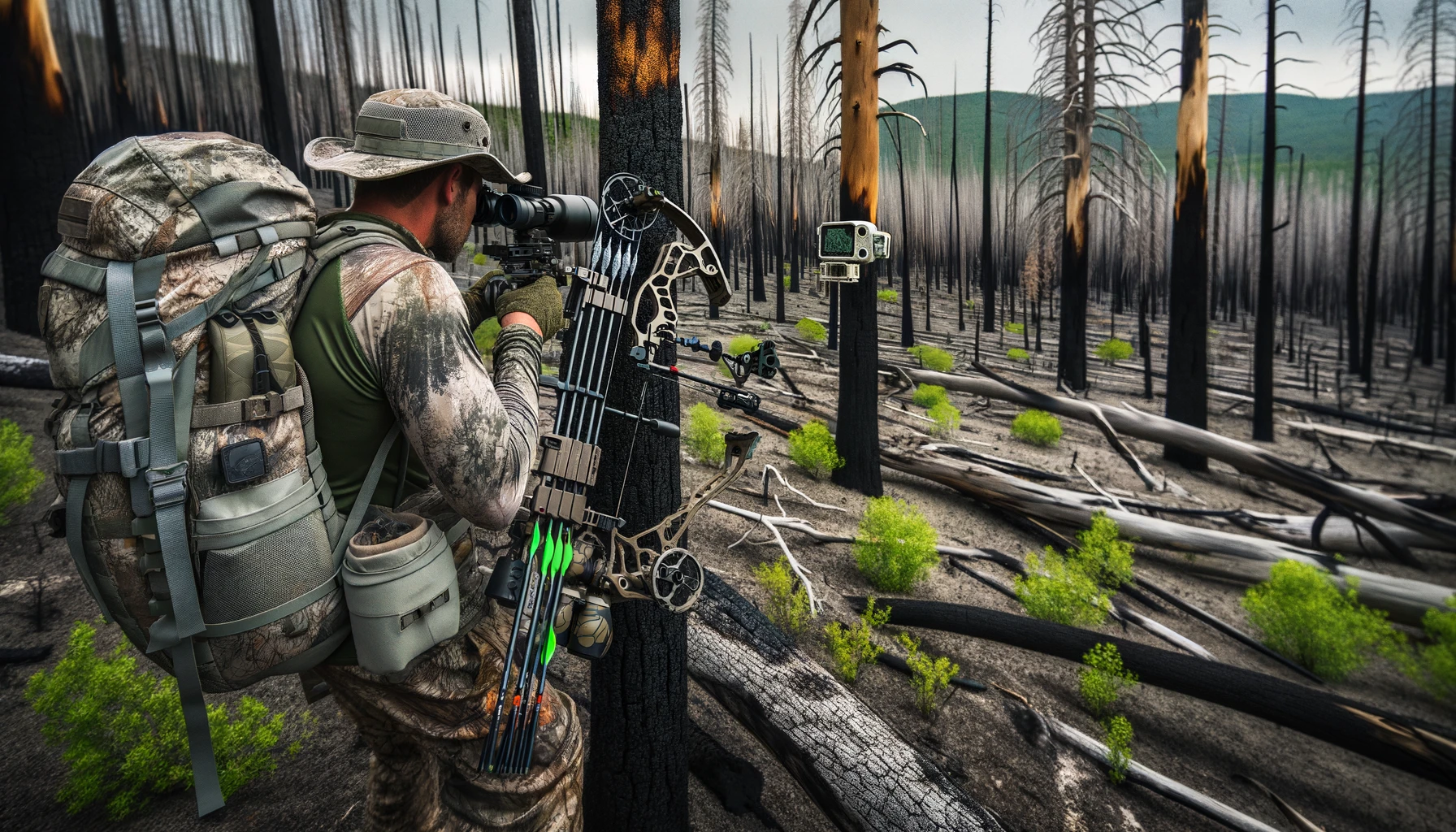Rising from the Ashes: Ethical Hunting Strategies in Post-Fire Ecosystems


Table of Contents
- Introduction
- Understanding the Impact of Burns
- Scouting Post-Burn Areas
- Adjusting Hunting Strategies
- Safety and Ethical Considerations
- Community Engagement and Support
- Utilizing Technological Advancements
- Engaging in Post-Burn Conservation Efforts
- Adapting Gear and Equipment for Burned Areas
- Building Knowledge and Awareness
- Conclusion
- Frequently Asked Questions (FAQs) About Ethical Hunting Strategies in Post-Fire Ecosystems
Introduction
Wildfires and controlled burns can dramatically alter the landscape of hunting areas, impacting habitat, wildlife patterns, and accessibility. While such events might initially seem detrimental to hunting prospects, they also offer unique opportunities for adaptation and discovery. This guide explores strategies hunters can employ to navigate and capitalize on hunting areas affected by sudden burns.
Understanding the Impact of Burns
Immediate Effects on Wildlife
- Habitat Disruption: Fires can temporarily displace wildlife, pushing them to adjacent areas with more cover and food availability. However, many species quickly return as new growth emerges.
Long-Term Ecological Benefits
- Regeneration and Biodiversity: Over time, burns can enhance habitat quality, encouraging new growth that attracts a variety of wildlife, making these areas potentially more vibrant for hunting.
Scouting Post-Burn Areas
Revisiting Scouting Basics
- Adapted Scouting Techniques: Utilize satellite imagery and on-the-ground scouting to assess the changes. Look for surviving patches of cover, water sources, and new growth areas that attract wildlife.
Identifying New Hotspots
- Edge Habitats: The edges where the burn meets unburned areas often become hotspots for activity, as they provide both cover and emerging food sources.
Adjusting Hunting Strategies
Adapting to Altered Landscapes
- Visibility and Movement: Open landscapes post-burn may offer increased visibility, allowing for longer-range spotting but also requiring more stealth in approach due to the lack of cover.
Leveraging New Growth
- Attracting Game: Focus on areas where new vegetation is sprouting. These spots can be particularly attractive to herbivores and, subsequently, to predators.
Safety and Ethical Considerations
- Remaining Vigilant: Be aware of potential hazards in burned areas, such as unstable trees, ash pits, and uneven ground.
Respect for Regeneration
- Minimizing Impact: Practice Leave No Trace principles to avoid disturbing the regenerating ecosystem. Stick to established paths and avoid damaging new growth.
Community Engagement and Support
Collaboration with Land Managers
- Stewardship Opportunities: Engage with local land management agencies to participate in post-fire recovery efforts, such as replanting projects or habitat enhancement initiatives.
- Educating Fellow Hunters: Share your observations and learnings about post-burn hunting opportunities and strategies, contributing to a collective understanding of fire’s role in habitat management.
Utilizing Technological Advancements
Geospatial Analysis for Habitat Changes
- Mapping the New Terrain: Advanced mapping technologies can help you understand how fires have altered the terrain. Use GIS data and satellite imagery to identify new game trails, water sources, and green-up areas post-burn.
Trail Cameras for Real-Time Monitoring
- Wildlife Activity Tracking: Deploying trail cameras in strategic locations can provide insights into how wildlife is adapting to the burned area. Monitor these cameras regularly to track the return and movement patterns of game species.
Engaging in Post-Burn Conservation Efforts
Participating in Reforestation Projects
- Active Ecosystem Recovery: Join reforestation and habitat restoration projects to accelerate the recovery of game habitats. These efforts not only benefit wildlife but can also enhance future hunting opportunities.
Wildlife Population Surveys
- Contributing to Research: Volunteer for wildlife surveys conducted by conservation groups or agencies. These surveys help assess the impact of fires on wildlife populations and guide management decisions.
Adapting Gear and Equipment for Burned Areas
Choosing the Right Camouflage
- Blending into a Charred Landscape: The traditional camouflage might not be effective in a post-burn landscape. Consider gear that matches the altered environment, such as ash-gray patterns or minimalist designs that blend with the sparse vegetation.
Safety Gear for Rugged Terrains
- Protective Clothing and Footwear: Navigating a burned area can expose you to sharp objects, unstable ground, and ash pits. Wear durable, protective clothing and footwear to mitigate these risks.
Building Knowledge and Awareness
Understanding Fire Ecology
- The Role of Fire in Ecosystems: Educate yourself about the ecological role of fires. Understanding fire’s benefits can shift the perception of burned areas from devastated landscapes to ecosystems undergoing rejuvenation.
Regulations and Legal Considerations
- Staying Informed on Access and Restrictions: Post-fire regulations can change. Stay updated on legal considerations, access restrictions, and hunting guidelines for burned areas through local wildlife agencies or hunting organizations.
Conclusion
Sudden burns present both challenges and opportunities for the hunting community. By understanding the ecological impact of fires, adapting scouting and hunting strategies, and prioritizing safety and ethical considerations, hunters can continue to enjoy and contribute positively to their favorite pastimes, even in landscapes touched by fire. Embracing the changes and the new dynamics of post-burn areas can lead to unexpected and rewarding hunting experiences.
Frequently Asked Questions (FAQs) About Ethical Hunting Strategies in Post-Fire Ecosystems
How soon after a fire can I hunt in the area?
- Answer: It depends on the severity of the burn, regrowth progress, and local regulations. Always check with land management agencies for access restrictions and safety advisories.
Will hunting in post-burn areas scare off returning wildlife?
- Answer: Wildlife adapts quickly to post-fire environments. Responsible hunting practices and minimal disturbance can ensure wildlife continues to thrive in these areas.
Are certain game species more attracted to post-burn areas than others?
- Answer: Yes, herbivores may be drawn to the area by new plant growth, which in turn can attract predators. Species attraction will vary based on the stage of regrowth and the type of vegetation emerging.
Can I participate in habitat restoration in burned areas?
- Answer: Absolutely. Many organizations and agencies welcome volunteer participation in restoration efforts. It’s a great way to contribute to the habitat you enjoy hunting in.







